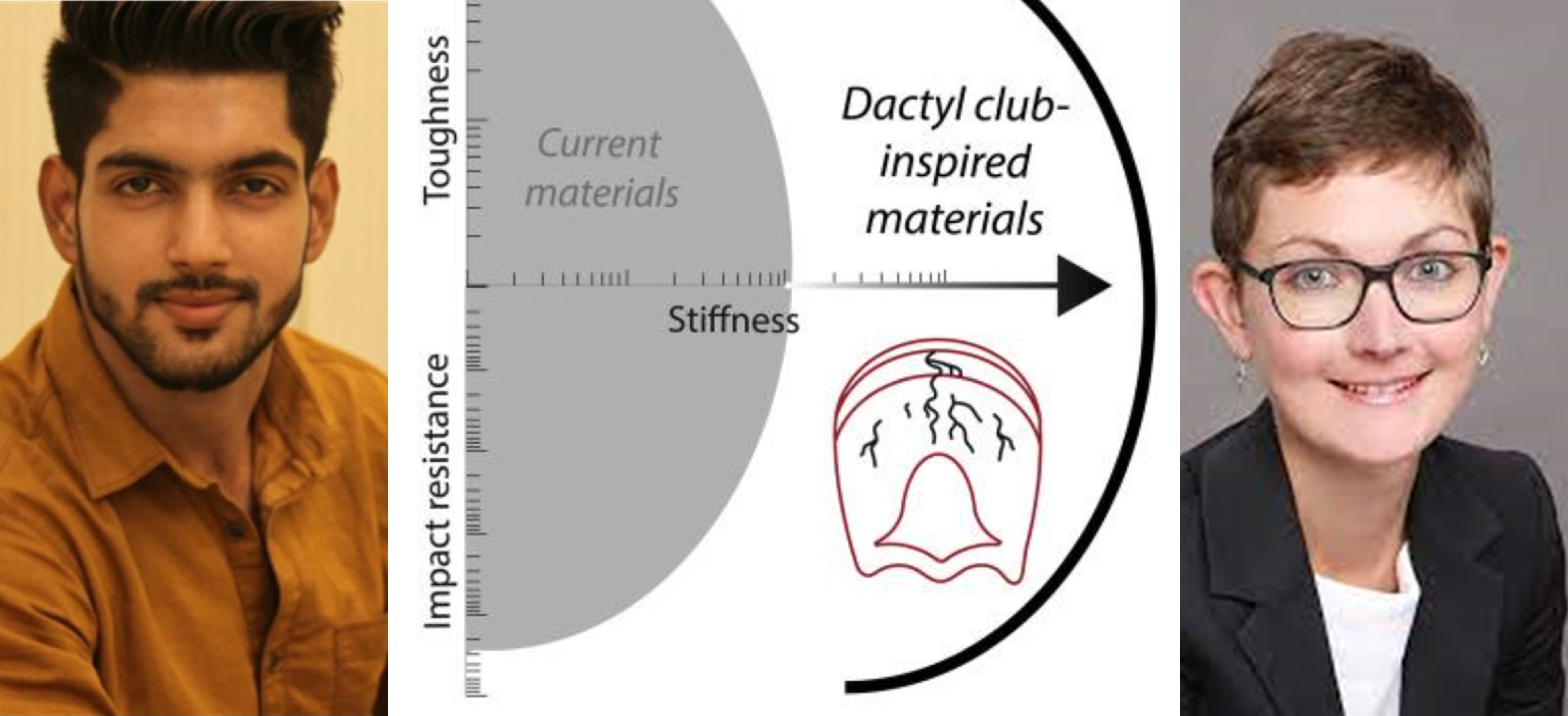MAE researchers propose development of lightweight impact-resistant materials by drawing inspirations from mantis shrimp's dactyl club
A study by MAE PhD student Rohit Pratyush Behera and Nanyang Assistant Professor Hortense Le Ferrand reviewed the microstructure and properties of natural dactyl clubs of mantis shrimps.
Mantis shrimps use their dactyl club to strike multiple high-velocity impacts against stiff and hard surfaces. To sustain the loads and dissipate energy, their club has evolved a complex multiscale organization segmented in an impact surface, an impact region, and a periodic region. Composed essentially of nanoparticles, mineralized chitin microfibers, and proteins, each region exhibits microstructural specificities linked to energy-dissipating mechanisms. Fabricating synthetic materials that exploit similar organizations and mechanisms could lead to the development of lightweight impact-resistant strategies for a multitude of applications. To this aim, the microstructure and properties of the natural dactyl club and its key toughening mechanisms are reviewed, as well as current and potential fabrication approaches. Challenges and limitations of those approaches are discussed to hopefully help guide future research on bioinspired impact-resistant materials.
The study has recently been published in Matter: https://www.sciencedirect.com.remotexs.ntu.edu.sg/science/article/abs/pii/S2590238521003593








